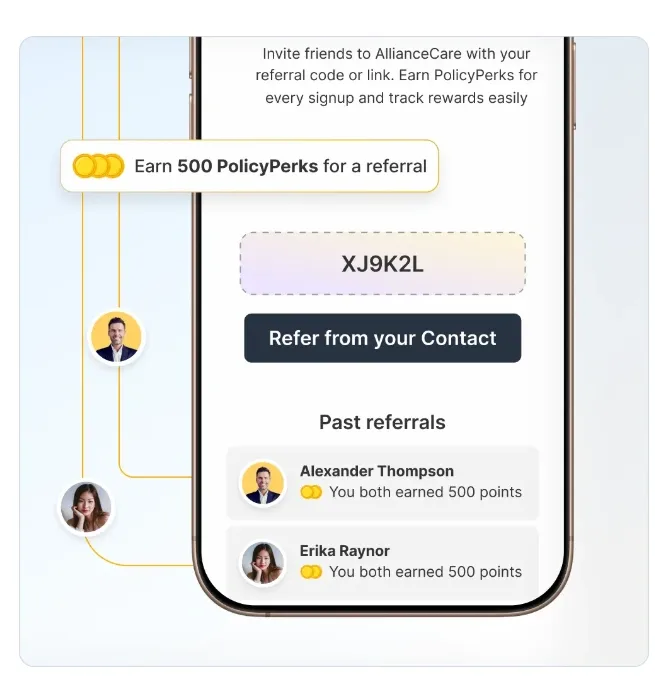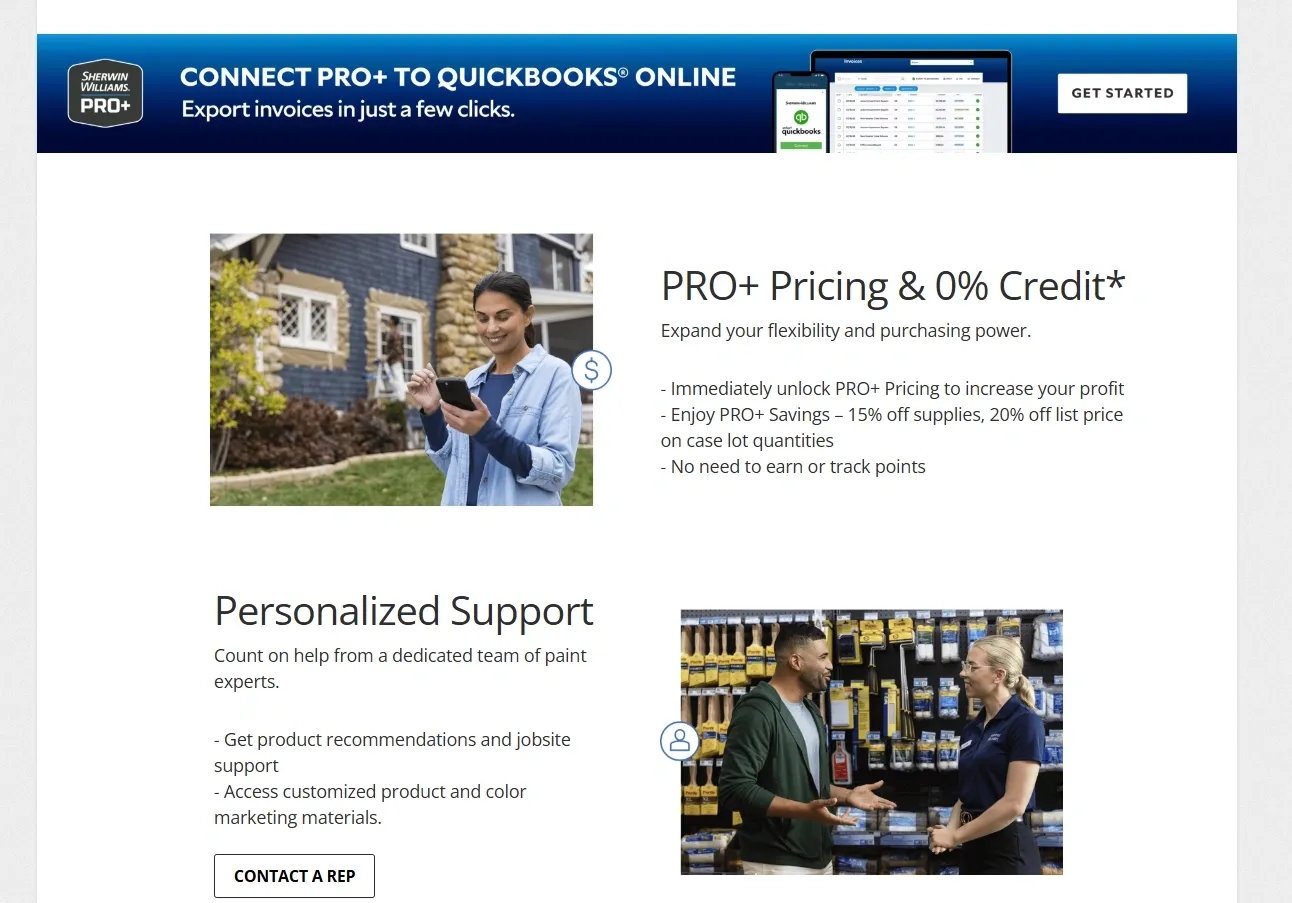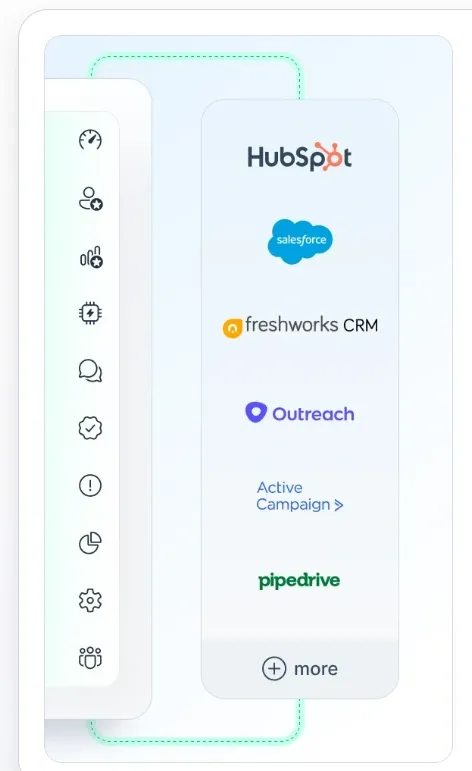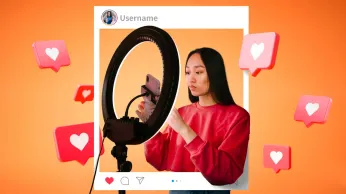On this page
The global painting and coatings market, valued at $194 billion, is driven by large companies and a skilled workforce comprising painting contractors, professional painters, and small business owners who manage multiple projects.
These individuals aren’t just end-users, but also product influencers and brand advocates who drive demand for painting materials across residential, commercial, and industrial segments.
With numerous paint brands available on the market, painter loyalty programs encourage skilled workers to choose their preferred brand. To stand out, brands must go beyond price wars and product claims. Painter loyalty programs will not just act as a reward mechanism but as a relationship-building tool.
These programs help paint brands differentiate, retain, and engage their most valuable B2B customers by recognizing the buyer’s role as both a customer and a business partner.
Using real-world examples from leading paint brands, the blog explores painter loyalty programs and their significance. It also examines the everyday challenges that these loyalty programs encounter.
What Is A Painter Loyalty Program?
A painter loyalty program is a structured rewards initiative designed specifically for professional painters, small painting businesses, and painting contractors to incentivize and reward them for continued engagement with a particular paint brand or product line.
Painter reward programs are a strategic tool for paint manufacturers and suppliers to build strong, long-term relationships with painters, who are key influencers in product selection and brand recommendation.
Why painter loyalty programs matter
- Strengthen brand loyalty: By rewarding painters for their loyalty, brands ensure continued preference and reduce the likelihood of switching.
- Drive repeat purchases: Ongoing incentives encourage painters to choose the same brand, leading to consistent sales.
- Enhance product awareness: The program's training and educational content keep painters informed about new offerings, increasing their confidence in recommending products.
- Build long-term relationships: These programs foster trust and commitment, creating mutually beneficial partnerships between brands and painters.
Why Brands Need Painter Loyalty Programs
The paint and hardware market is fragmented, and building strong relationships with professional painters is more than just good business.
Here’s why more brands are investing in painter loyalty programs to stay ahead:
1. High competition in the paint industry
The paint industry is saturated with well-known players, ranging from global brands such as Sherwin-Williams, PPG, and Benjamin Moore to regional manufacturers and local hardware stores.
With numerous options available on the market, professional painters often switch between brands based on factors such as price, availability, and convenience.
A loyalty program serves as a differentiator, providing painters with a reason to remain committed to the brand. By offering exclusive perks, such as discounts, early access to new products, or free training, brands make painters feel valued and incentivize them to return, even in a cluttered marketplace.
2. Lifetime value of a professional painter
A professional painter isn’t a one-time customer. They are consistent, high-volume buyers who regularly purchase paint, primers, tools, and accessories for multiple projects throughout the year.
According to industry estimates, a busy painting contractor generates thousands, if not tens of thousands, of annual sales for a single brand.
Given this high customer lifetime value (CLV), retaining just one loyal painter is far more profitable than acquiring several one-time retail customers. A well-structured loyalty program for painters turns these high-value users into long-term brand advocates, reducing churn and boosting overall revenue.
3. Importance of repeat business and brand trust
In B2B segments, such as professional painting, trust plays a crucial role. Painters often stick with familiar products that deliver consistent quality and performance. A loyalty program helps reinforce that trust by creating a partnership between the brand and the painter.
Moreover, repeat business isn't just about habit; it's also about perceived value. Loyalty programs amplify this perception by rewarding continued engagement, which makes painters feel appreciated and more emotionally invested in the brand.
4. Role of loyalty in influencing brand choice
85% of customers feel loyalty programs make them more likely to continue doing business with brands. In this case, professional painters are practical decision-makers when choosing a paint brand.
A well-crafted loyalty program will directly influence their brand preferences by:
- Shifting purchasing behavior toward higher-margin or featured products
- Encouraging bulk buying through tier-based rewards
- Promoting referrals, which expand the brand’s reach organically
- Enhancing stickiness, so painters are less likely to switch brands for short-term deals
Different Types of Painter Loyalty Programs
Designing a painter loyalty program that drives engagement and long-term retention requires more than just handing out points. Let’s have a look at some different types of high-performing painter loyalty programs:
1. Points-based rewards
Painters earn points for every gallon of paint, brush, or primer they use. These points accumulate over time and can be redeemed for valuable rewards, such as gift cards, tools, branded gear, or future discounts.
The key is making point accumulation intuitive, transparent, and valuable enough to motivate consistent participation.
It creates a clear link between spending and earning, encouraging consistent repeat purchases. It also offers a strong foundation for future customization and gamification.
2. Tiered incentives
Paint contractors move through tiers (e.g., Bronze, Silver, Gold, Platinum) based on their cumulative spending or frequency of purchases. Each tier unlocks new benefits, including larger discounts, enhanced rewards, and premium support.
This gamified approach motivates painters to increase spending and loyalty to reach the next tier, similar to airline or hotel reward programs. It instills the desire to “level up” and taps into competitive and aspirational mindsets common in B2B service providers.
3. Cashback or rebate program
Instead of points, painters earn a percentage of their spending as store credit, prepaid cards, or quarterly rebates. This model provides tangible, immediate value.
Cashback feels more concrete than points, especially for budget-conscious professionals running tight operations. It also offers flexibility in how rewards are used.
A reward here can be if a painter spends $2,500 per quarter and receives 5% cash back as a prepaid Visa card.
4. Frequency-based program
A simple “buy X, get Y free” (Buy 10 gallons of paint, get 1 gallon free) model tracks purchases over time. This can be implemented digitally or physically (e.g., via an app or a printed card).
It is straightforward to understand and benefit local hardware stores or smaller paint retailers that want a quick-start loyalty program without the need for complex infrastructure.
5. Referral-based program
Painters earn rewards for referring other painters, contractors, or small businesses. Rewards can be monetary, point-based, or product-based.
Word of mouth is strong in the painting community. Referral programs incentivize painters to promote brands they trust, expanding your customer base with minimal acquisition costs.

For instance, if you refer a new customer who spends at least $500, the referrer and the new customer will receive $50 in rewards.
6. Coalition-based program
Build a coalition loyalty program where paint brands collaborate with partners, such as hardware tool manufacturers, safety gear suppliers, or home improvement services, to offer shared rewards or redemption options.
This gives painters more variety and value in their rewards. It also positions the loyalty program as a holistic business support tool rather than a single-brand initiative.
Earn points from purchases with your primary paint brand and redeem them for discounts on ladders, brushes, or equipment from partner brands.
7. Education-driven program
Painters receive rewards or bonus points for completing training modules, attending workshops, or getting certified in specific product lines or techniques.
This builds brand credibility while improving painter skills. It turns loyalty into professional development, helping painters grow their businesses with more knowledge and certifications.
8. Hybrid loyalty program
Combines two or more models, for example, a points-based system layered with tiers, plus bonus rewards for referrals or certifications.
A hybrid approach creates multiple engagement paths, appealing to different painter personas (e.g., volume buyers, loyalists, influencers). It also allows brands to experiment with personalization and data-driven targeting.
Painters earn points for purchases, advance to higher tiers for larger discounts, and receive referral bonuses and certification badges through a unified platform.
Real-World Examples of Painter Loyalty Programs
Many leading paint brands have recognized the strategic value of building long-term relationships with professional painters and contractors.
Here are some notable examples of how global and regional players have successfully implemented painter loyalty programs:
1. PRO+ Program
Sherwin-Williams, a US-based paint company, offers a PRO+ program, one of the most recognized loyalty programs for painters.

The loyalty program for painters offers exclusive pricing, volume discounts for professionals, and tools to track order history. It also offers personalized offers, seasonal promotions, access to color tools, and specification support.
2. Asian Paints’ Contractor Loyalty Program
Asian Paints runs a widely used contractor rewards program across India and Southeast Asia, specifically for local painters and contractors. The focus of Asian Paints' loyalty program is community building and upskilling, recognizing that loyalty goes beyond transactions and is about enabling growth.
The Contractor Loyalty Program offers points for every purchase, and painters can track the points collected via barcode or app.
3. PPG Pro Program
PPG’s loyalty platform offers contractors a streamlined way to earn benefits and manage projects through their PPG Pro system.
It offers rebates and special pricing for professional accounts, personalized business support, and volume incentives.
By combining loyalty rewards with digital tools and dedicated support, PPG ensures its contractor customers feel supported financially and operationally.
4. Berger Paints’ Express Painting Loyalty Program
Berger Paints launched a loyalty initiative for its Express Painting service, targeting certified painters and contractors. Berger’s program builds brand visibility while also upgrading the painter’s experience through tools and training—a win-win.
The loyalty program offers painters points and incentives for using Berger’s tools and paints, as well as access to branded uniforms, kits, safety equipment, and more.
5. Nippon Paint’s Paint Expert Program
Nippon Paint targets painters and paint retailers with its Paint Expert Program across Asia. The program's mobile-first approach makes it accessible to on-site painters, increasing participation and reward redemption rates.
The loyalty program allows painters to earn points via SMS or the app by scanning product codes, redeeming points for merchandise and tools, and participating in training events and paint demonstrations.
Challenges in Traditional Painter Loyalty Programs
While many paint brands have adopted loyalty programs to build long-term relationships with painters, traditional models often fall short in execution.
Here are some of the most common challenges:
- Many older painter loyalty programs still rely on paper receipts, barcode stickers, or physical punch cards. Painters sometimes need to upload invoices or contact customer service to manually claim rewards. This leads to errors, lost data, and frustration, making it difficult to track performance in real-time.
- Most paint companies don’t opt for a loyalty management solution, making it difficult for companies to manage all their operation under a painter loyalty program.
- Traditional programs often adopt a one-size-fits-all approach, offering the same points, rewards, and communication to every painter, regardless of location, business size, or purchase behavior. Making the painters feel unappreciated for their unique needs or level of loyalty.
- If the rewards catalog includes only merchandise that isn't useful or desirable, such as outdated gadgets or household items, it fails to create real value for painters running a business.
- Many traditional programs are not mobile-friendly or integrated with digital purchase systems, making it difficult for painters to track points, submit purchases, or redeem rewards while on the go. This leads to delayed tracking, creates distrust, and confusion.
- Programs focusing solely on transactions miss a key opportunity to help painters grow their businesses through training, certifications, or marketing support.
How Loyalife Can Power Smarter Painter Loyalty Programs
Loyalife offers a modern, scalable approach to loyalty that addresses the key limitations of traditional point loyalty programs.
Designed with flexibility, automation, and user engagement at its core, Loyalife enables paint brands to build data-driven, easy-to-manage, and genuinely rewarding loyalty programs for painters.
1. End-to-end program automation
Loyalife automates every aspect of a painter loyalty program from enrollment to point accrual and reward redemption. This reduces administrative overhead and ensures a seamless experience for program managers and painters.
Automation also eliminates errors from manual tracking and helps the program scale effortlessly across regions or painter segments.
2. Customizable rewards
With Loyalife, brands offer painters a highly relevant and motivating set of rewards.
The platform offers a range of options, including digital gift cards, branded tools, job site equipment, travel vouchers, and more. This flexibility allows businesses to align rewards with what painters value, increasing program engagement and satisfaction.
4. Analytics to track engagement and purchase trends
Loyalife provides actionable reports and insights through powerful analytics dashboards. Brands can monitor program performance, identify top-performing painters, track redemption patterns, and optimize real-time campaigns for maximum effectiveness.

This data-driven approach helps tailor offers and incentives to drive better ROI and deeper loyalty.
5. Mobile-first, multilingual, and omnichannel experiences
Recognizing that painters are often on the move, Loyalife is designed with a mobile-first approach and offers multilingual support. Painters can easily access their accounts, check point balances, or redeem rewards on a job site, in-store, or at home.
An omnichannel loyalty program ensures a consistent and accessible experience across devices and platforms, boosting engagement.
6. Integration with POS or CRM Systems
Loyalife integrates with point-of-sale (POS) and customer relationship management (CRM) systems, enabling automatic data syncing from transactions to loyalty dashboards.

This ensures accurate, real-time point tracking without manual effort, providing a connected experience across business systems.
Tips for Creating a High-Impact Painter Loyalty Program
Creating a high-impact painter loyalty program starts with understanding who painters are, what motivates them, and how they work. A well-designed program does more than drive repeat purchases; it builds lasting relationships and turns painters into brand advocates.
Here is a checklist to design a painter loyalty program:
1. Understand the painter persona
Professional painters are not just product users; they are also skilled professionals. They're often small business owners juggling multiple roles. They are typically time-starved, cost-conscious, and under pressure to deliver quality work on tight deadlines.
Loyalty programs should respect their time, simplify reward access, and offer real business value. The messaging, reward structure, and onboarding process must reflect their quick, efficient, and mobile-first working style.
A program built with empathy for this persona will always increase adoption and retention.
2. Offer both monetary and non-monetary value
While discounts, cashback, and free products are great motivators, painter loyalty goes deeper when non-monetary value is added. Think training workshops, early access to new products, certification programs, or marketing support.
These perks help painters upskill, grow their businesses, and align more closely with the brand. Combining practical financial incentives with long-term professional value makes your loyalty program more compelling and less likely to be walked away from.
3. Keep the user experience seamless and accessible
If painters have to upload invoices, fill out lengthy forms, or navigate clunky apps just to earn or redeem rewards, they won’t stick around. The program should be intuitive, mobile-friendly, and designed for minimal friction.
Ensure that point tracking is real-time, redemptions are just a few clicks away, and the entire journey from enrollment to reward is hassle-free.
Multilingual support and offline options will further widen the program’s reach, especially in regional or underserved markets.
4. Use data to personalize rewards and messaging
Generic loyalty programs often struggle with low engagement because they treat all users equally. Data changes that. Brands personalize offers, communications, and rewards by tracking customer behavior, including purchase frequency, preferred product types, and redemption patterns.
A painter who regularly buys premium products might appreciate early access to innovations, while a volume buyer may respond better to bulk discounts or tool upgrades.
5. Include referral and social sharing mechanisms
Word of mouth is a powerful force in the art community. A trusted painter’s recommendation influences buying decisions within peer networks, work crews, and local contractor groups.
Reward painters for referring others to the loyalty program or brand, and make it easy to share through WhatsApp, SMS, or social media. Adding a referral layer transforms your painters into brand ambassadors and promotes organic program growth without incurring significant marketing expenses.
Conclusion
Now we know why painter loyalty programs are a powerful way to forge long-term relationships with the professionals who drive your brand visibility and repeat sales.
For brands, these programs lead to higher retention, stronger brand advocacy, and more predictable revenue from a loyal contractor base.
For painters, they deliver real value from cashback and tools to training and growth opportunities, helping them build their businesses while feeling recognized and rewarded.
As the industry evolves, so should your loyalty strategy.
By opting for an effective AI-powered loyalty management solution like Loyalife, painting companies can easily launch and manage a more innovative, fully automated, mobile-friendly, customizable, and data-driven painter loyalty program.
Ready to turn painter loyalty into your competitive edge? Book your demo now!
FAQs
1. What is a painter loyalty program?
A painter loyalty program is a rewards-based initiative designed by paint brands or hardware companies to encourage repeat purchases and long-term engagement from professional painters and contractors.
These programs offer incentives such as points, discounts, gift cards, tools, or exclusive training in exchange for product purchases, referrals, or brand advocacy.
2.How does a painter's loyalty program work?
A painter loyalty program enables painters to earn rewards based on their interactions with a brand, typically through product purchases or other activities. Here’s how it usually works:
- Sign-Up: Painters register for the program through a website, app, or in-store enrollment.
- Point Accumulation: Each purchase earns points, usually based on product quantity or spend value (e.g., 1 point per gallon of paint).
- Tiers or Levels: Some programs have tiered structures, such as Silver, Gold, and Platinum, where painters unlock additional benefits as their purchases increase.
- Redeem Rewards: Painters can redeem their accumulated points for various rewards, including tools, merchandise, gift cards, or travel vouchers.
- Bonus Activities: Additional points may be awarded for referrals, attending training, or engaging with the brand online.
3.What Are the Features of a Painter Loyalty Program?
Here are some of the key features that make these programs effective:
- Points-based earning system: Painters earn points based on purchases, typically per gallon or product type. This provides a tangible incentive for repeat business and helps track loyalty over time.
- Tiered rewards structure: Programs often include multiple tiers to encourage higher engagement. As painters progress, they unlock better rewards, exclusive offers, or early access to products.
- Redeemable rewards catalog: Rewards include digital gift cards, power tools, safety gear, branded merchandise, travel vouchers, and cash back. A diverse and relevant catalog keeps painters motivated to participate.
- Referral bonuses: Many programs reward painters for referring other professionals. This drives new user acquisition and strengthens loyalty through community-based promotion.
- Training and certification access: Some programs offer online or in-person training sessions, certifications, or product demonstrations, providing non-monetary value and helping painters advance their professional growth.
- Mobile and multilingual access: Modern mobile-friendly programs often support multiple languages to cater to regional audiences. This improves usability and participation, especially among field-based professionals.
- Seamless purchase integration: Advanced programs seamlessly integrate with POS systems or CRMs, enabling automatic point tracking with no manual input, thereby reducing errors and enhancing user trust.
- Gamification elements: Leaderboards, achievement badges, or seasonal challenges, add a layer of fun and competition, driving higher engagement.









